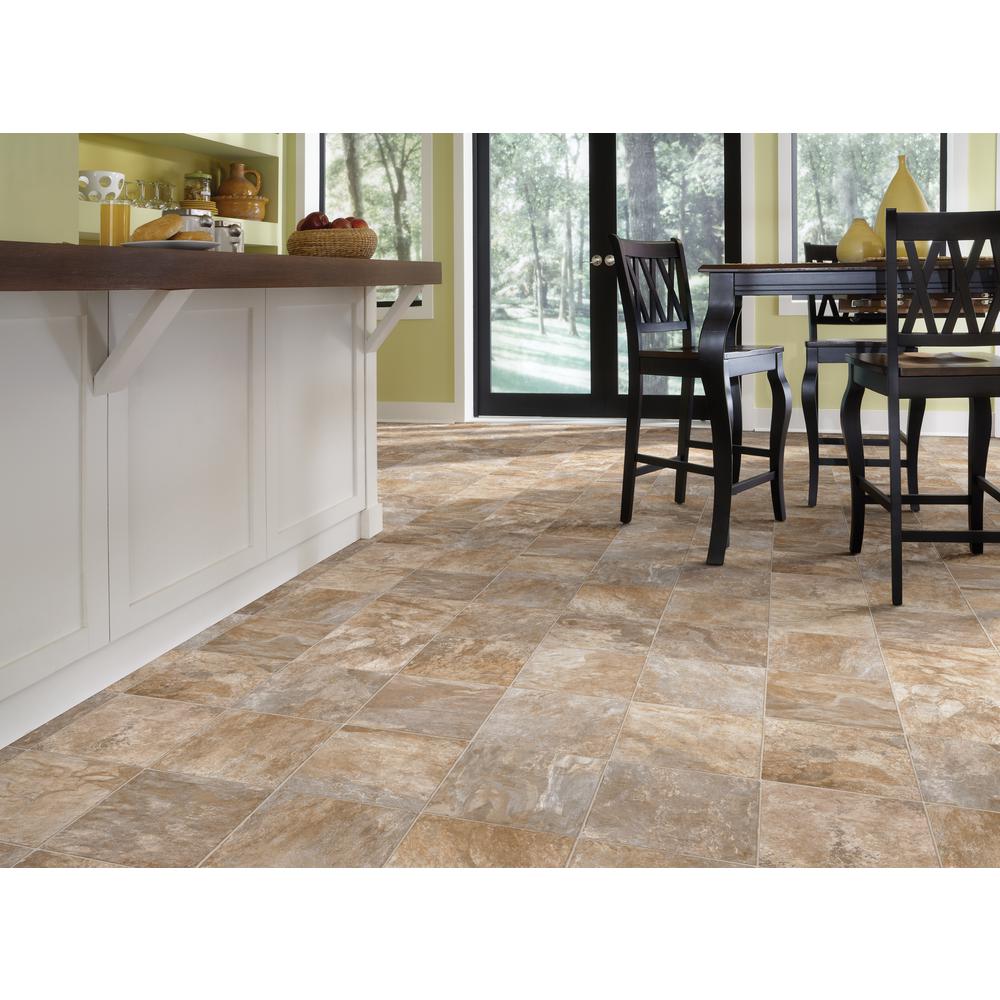

Because the wear layer is so crucial to the durability and appearance of the floor, developing tougher and When dry, this layer of clear PVC, called the wear layer, protects the printed pattern and also provides a relatively maintenance-free surface that doesn’t require waxing. To solve the problem, manufacturers add a top vinyl layer that’s about 10 mils thick. Of course, without some protection, this thin printed layer would soon disappear through normal abrasion. Next, the decorative pattern is printed on a very thin vinyl coating that covers the core layer. To support this vinyl core, it’s bonded to a 25-mil felt backing that’s made from fibrous components used in the papermaking industry, limestone and clay, all held together with a plastic binder. In layered construction, flooring makers typically create a foam plastisol layer that’s about 25 mils thick. To produce the variation of design that vinyl flooring is noted for, manufacturers turn to modern printing technology and a layered, heterogeneous construction. While solid vinyl and VCT have the long-wearing advantage of homogeneous composition, decorativeĪppearance is limited to block colors or patternsĬreated through the introduction of coloring agents Solid tile typically has a satin finish that requires periodic buffingĮlements extend through the tile, they don’t wear away with heavy use. Vinyl composition tile (VCT) is a variation of solid vinyl tile with synthetic fillers and binders. This type of vinyl flooring is called homogeneous because the material and any decorative elements are the same from top to bottom.

Vinyl sheets produced in this manner can then be cut into 6-, 9- or 12-in. From here this plastisol, or liquid plastic, coat is dried through an application of heat and air that fuses the material into a tough, durable sheet. To produce this, manufacturers suspend the vinyl in a liquid, creating a mixture that can be spread into a thin layer by a rolling process.

The primary element in vinyl flooring is a simple vinyl sheet. Vinyl flooring is made of polyvinyl chloride (PVC), with various compounds added to tailor the material’s characteristics such as color, flexibil-ity, hardness and sheen. You can find more great projects at Popular Mechanics DIY Central. This project was originally published in the December 2002 issue of Popular Mechanics. The downside to linoleum was that it needed toīe waxed periodically-the major reason it gave way to the more maintenance-free vinyl coverings. Made from linseed oil, powdered cork and wood, resins, limestone and pigments, linoleum was produced in both sheets and tiles, and was a popular solution for kitchens and baths up until the ’60s. Another solution had been around since the mid-19thĬentury-linoleum, and it’s making a bit of a comeback today. However, vinyl wasn’t the first material to come to the rescue. It’s this skinlike quality that makes vinyl flooring so attractive from a maintenance standpoint. The great thing about vinyl flooring is that it provides a relatively continuous covering without the gaping seams and natural absorbency of wood or the grout lines of ceramic tile. The key to all the variation is in the manufacturing process. Today, there are vinyl flooring options for every budget, every decor and every taste. And if you think it sounds bland, utilitar-ian and just a little too industrial, it’s time to take a closer look. Of course, we don’t call it plastic flooring, we call it vinyl flooring. Covering your floor with plastic-just like homeowners have been doing for the past 40 years-is the low-maintenance, high-performance solution to just about any well-trodden area. But, if you want to be practical too, there’s an essential alternative you shouldn’t leave out-plastic. All of these flooring solutions have their place. Living room luxu-ry? It’s wall-to-wall for most. Who isn’t charmed by the rich warmth of a polished hardwood floor? And when it comes to bathroom elegance, it’s difficult to pass up real ceramic tile.


 0 kommentar(er)
0 kommentar(er)
